Sancar Adali
Learning from Noisy Labels with Noise Modeling Network
May 01, 2020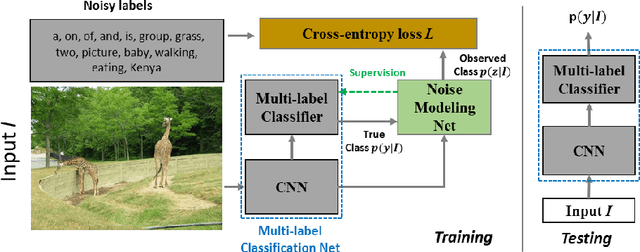
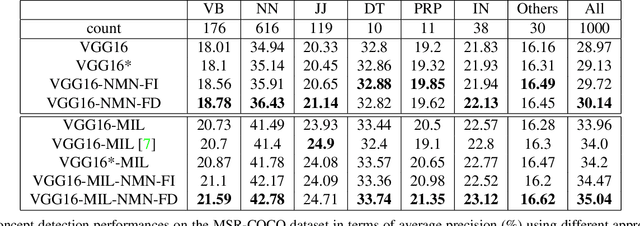
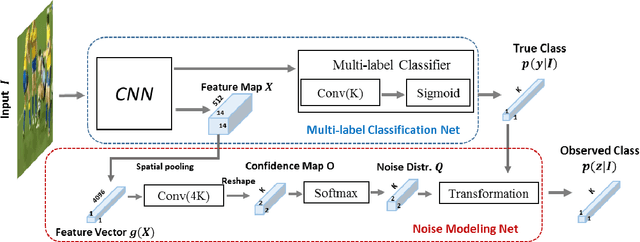
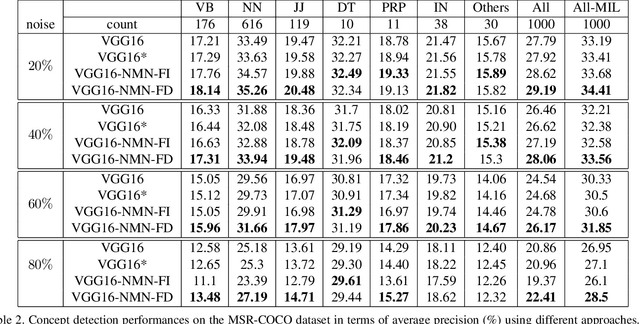
Abstract:Multi-label image classification has generated significant interest in recent years and the performance of such systems often suffers from the not so infrequent occurrence of incorrect or missing labels in the training data. In this paper, we extend the state-of the-art of training classifiers to jointly deal with both forms of errorful data. We accomplish this by modeling noisy and missing labels in multi-label images with a new Noise Modeling Network (NMN) that follows our convolutional neural network (CNN), integrates with it, forming an end-to-end deep learning system, which can jointly learn the noise distribution and CNN parameters. The NMN learns the distribution of noise patterns directly from the noisy data without the need for any clean training data. The NMN can model label noise that depends only on the true label or is also dependent on the image features. We show that the integrated NMN/CNN learning system consistently improves the classification performance, for different levels of label noise, on the MSR-COCO dataset and MSR-VTT dataset. We also show that noise performance improvements are obtained when multiple instance learning methods are used.
Seeded Graph Matching
Apr 10, 2018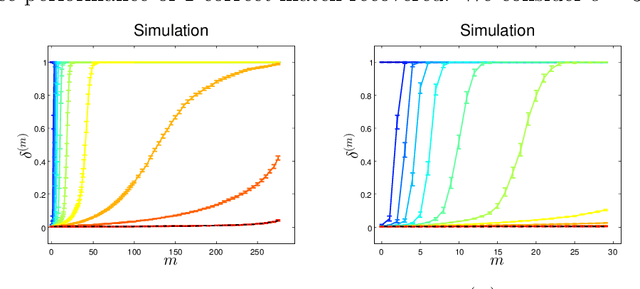
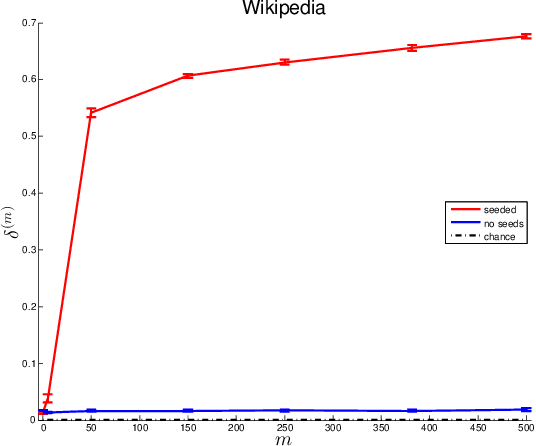

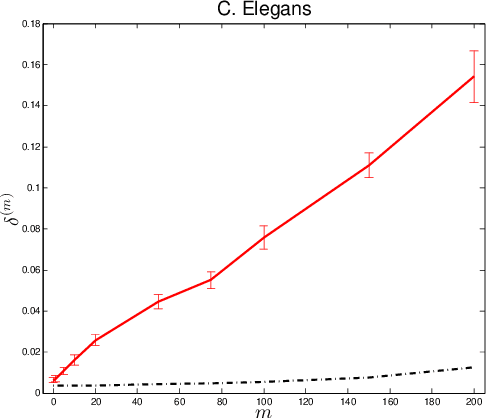
Abstract:Given two graphs, the graph matching problem is to align the two vertex sets so as to minimize the number of adjacency disagreements between the two graphs. The seeded graph matching problem is the graph matching problem when we are first given a partial alignment that we are tasked with completing. In this paper, we modify the state-of-the-art approximate graph matching algorithm "FAQ" of Vogelstein et al. (2015) to make it a fast approximate seeded graph matching algorithm, adapt its applicability to include graphs with differently sized vertex sets, and extend the algorithm so as to provide, for each individual vertex, a nomination list of likely matches. We demonstrate the effectiveness of our algorithm via simulation and real data experiments; indeed, knowledge of even a few seeds can be extremely effective when our seeded graph matching algorithm is used to recover a naturally existing alignment that is only partially observed.
Learning Spatiotemporal Features for Infrared Action Recognition with 3D Convolutional Neural Networks
May 18, 2017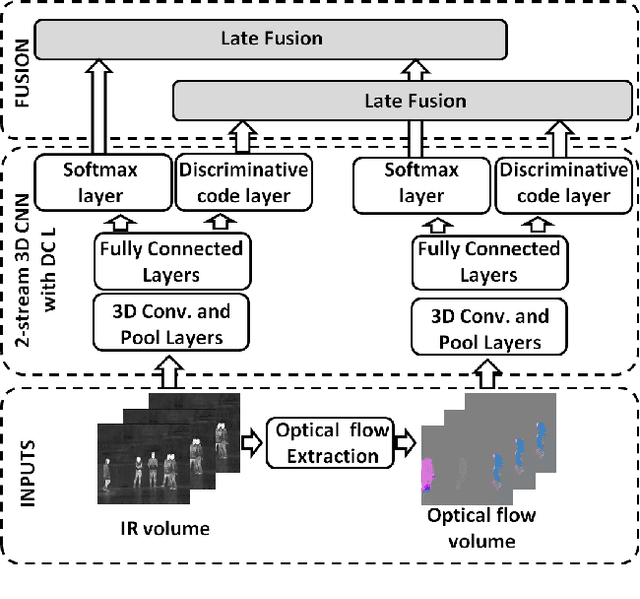
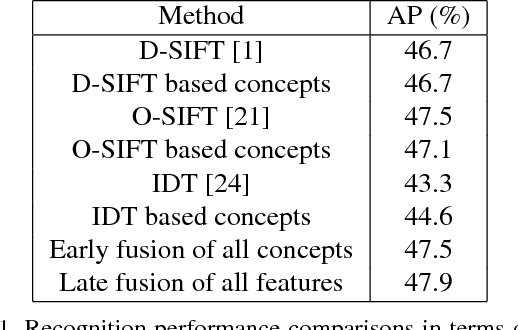
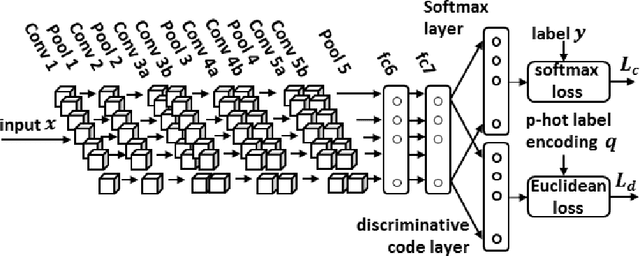
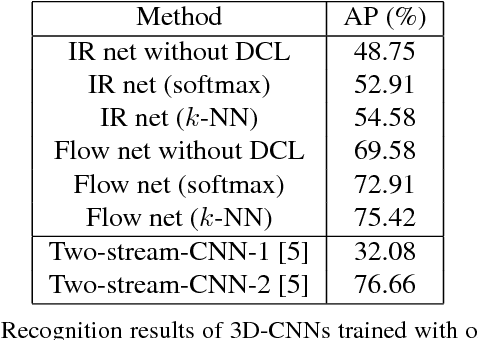
Abstract:Infrared (IR) imaging has the potential to enable more robust action recognition systems compared to visible spectrum cameras due to lower sensitivity to lighting conditions and appearance variability. While the action recognition task on videos collected from visible spectrum imaging has received much attention, action recognition in IR videos is significantly less explored. Our objective is to exploit imaging data in this modality for the action recognition task. In this work, we propose a novel two-stream 3D convolutional neural network (CNN) architecture by introducing the discriminative code layer and the corresponding discriminative code loss function. The proposed network processes IR image and the IR-based optical flow field sequences. We pretrain the 3D CNN model on the visible spectrum Sports-1M action dataset and finetune it on the Infrared Action Recognition (InfAR) dataset. To our best knowledge, this is the first application of the 3D CNN to action recognition in the IR domain. We conduct an elaborate analysis of different fusion schemes (weighted average, single and double-layer neural nets) applied to different 3D CNN outputs. Experimental results demonstrate that our approach can achieve state-of-the-art average precision (AP) performances on the InfAR dataset: (1) the proposed two-stream 3D CNN achieves the best reported 77.5% AP, and (2) our 3D CNN model applied to the optical flow fields achieves the best reported single stream 75.42% AP.
Seeded Graph Matching Via Joint Optimization of Fidelity and Commensurability
Jan 16, 2014



Abstract:We present a novel approximate graph matching algorithm that incorporates seeded data into the graph matching paradigm. Our Joint Optimization of Fidelity and Commensurability (JOFC) algorithm embeds two graphs into a common Euclidean space where the matching inference task can be performed. Through real and simulated data examples, we demonstrate the versatility of our algorithm in matching graphs with various characteristics--weightedness, directedness, loopiness, many-to-one and many-to-many matchings, and soft seedings.
 Add to Chrome
Add to Chrome Add to Firefox
Add to Firefox Add to Edge
Add to Edge